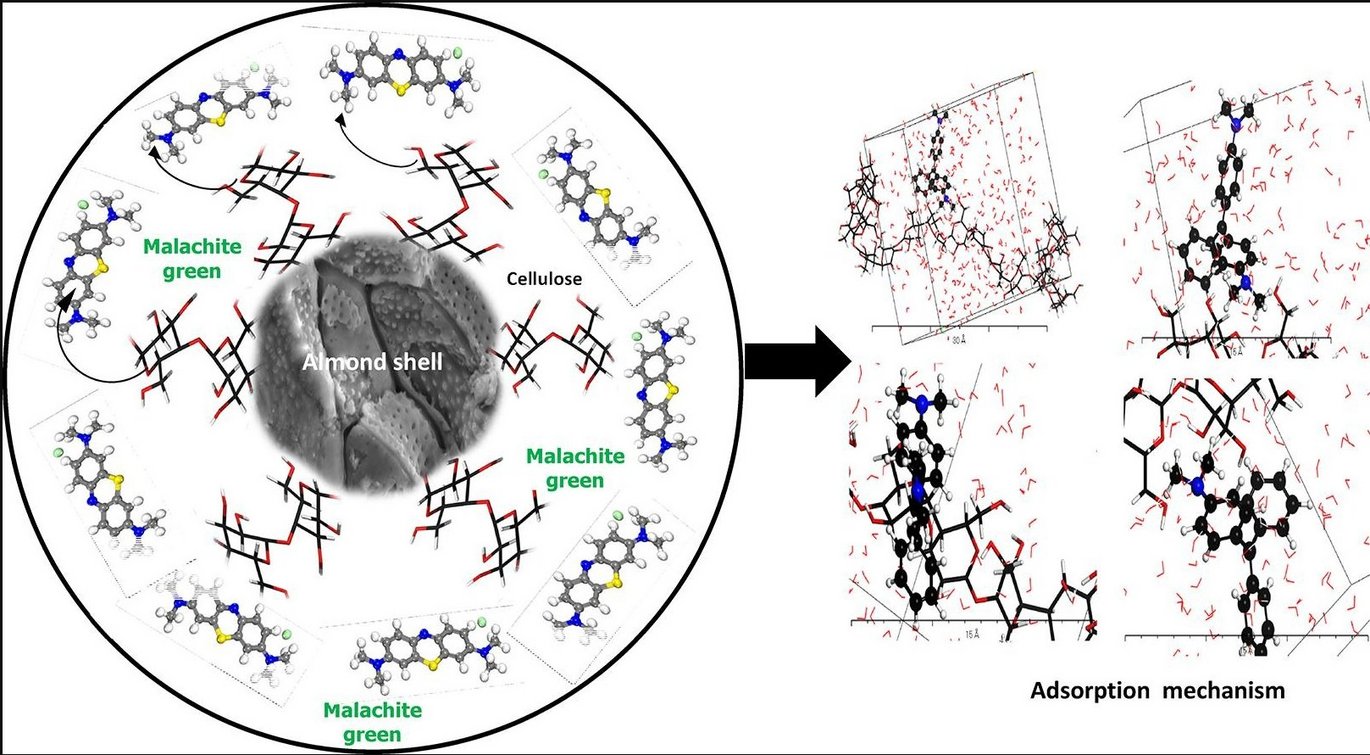Remediation of malachite-green dye from textile wastewater using biosorbent almond shell-based cellulose
New publication by El Hadj Ali YA, Hejji L, Seddik NB, Azzouz A, Pérez-Villarejo L, Stitou M et al.

Abstract:
The presence of malachite green (MG) in surface waters represents a major health hazard for aquatic organisms and communities living near contaminated water sources. In this study, almond shell adsorbents prepared from the four almond types Marcona (M), Fournat de Brézenaud (FZ), Ferraduel (FD) and Ferriages (FG), used to clean wastewater from the textile industry that had been contaminated with the color MG. Optimal adsorption parameters were determined through batch experiments using a standard dye solution. Further, SEM, XRD, BET, and FTIR were employed for characterizing the biosorbents. The examination of the experimental data using isotherms and kinetic models revealed that the adsorption of the MG occurs in a monolayer, with chemical adsorption as the rate-controlling step. The maximum adsorption capacities, under pH around 7 and temperature of 35 °C were 41.0, 61.0, 48.1, and 118.0 mg/g for M, FD, FG, and FZ, respectively. In addition, Monte-Carlo simulation models, and density functional theory calculations were performed to provide a more detailed understanding of the adsorption mechanism. Topological studies such as NCI, RDG, LOL, and ELF were conducted and discussed using Multiwave function (Multiwfn) and VMD programs in liquid phase. In conclusion, chemisorption limits the rate of the adsorption process, and that green cation malachite is more susceptible to nucleophilic than electrophilic attacking. Based on these experimental and theoretical results, it is possible to consider these materials as an inexpensive and viable solution to eliminate MG from wastewater. Adsorption on cellulose can be considered as a feasible strategy for wastewater treatment, and the adsorbents can be optimized for use in real wastewater samples at even lower concentrations. This approach offers an inexpensive and effective technological alternative to conventional methods for the retention of MG.
